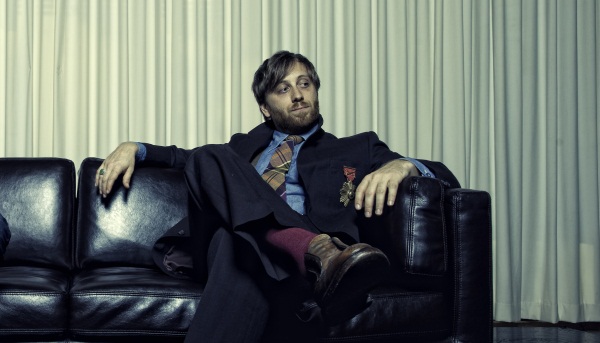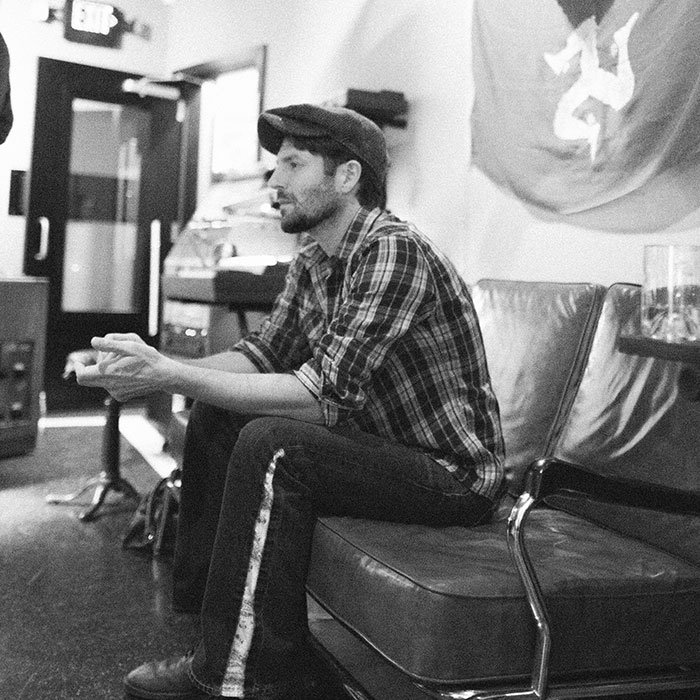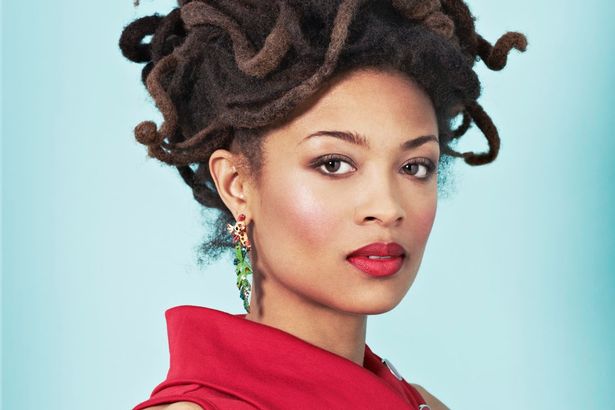Videos by American Songwriter
photo by John Peets
Dan Auerbach, the guitar-playing/singing fraction of The Black Keys, has been busy. There was the solo record Keep It Hid, then the hip-hop collaboration Blakroc, plus a dizzying array of other recent production credits (Hacienda, Cadillac Sky), not to mention the 15 crushingly awesome tracks on Brothers, he and drummer Patrick Carney’s return to form as The Black Keys proper.
Stream “Tighten Up” from Brothers
[wpaudio url=”https://savageventures-develop.go-vip.net/wp-content/uploads/2010/06/03-Tighten-Up.mp3″ text=”Tighten Up” dl=”0″]
What drew you early on to blues music?
Well, I grew up listening to that kind of stuff in my house. My dad would play Son House records and so I always felt comfortable with it. It felt like home. When I started playing guitar, I was just drawn to that music. I wanted to know how they made that sound. So that’s sort of how I became a musician, really, just listening to those records and trying to figure them out.
Has your taste broadened since then? How did you pick the Jerry Butler soul song “Never Give You Up” to cover on Brothers?
I think that when [The Black Keys] first started, I was 19. We’d never played a show, never written a song, never thought about starting a band. Our first record was made before we ever played a show. It was really just us with no rules and no expectations. It was fun to riff on these [blues] songs that I’d learned. I didn’t know anything about songwriting. Over the years, though, I’ve liked to challenge myself, and every time we make a record, I feel like I want to try to better the last one or at least try something I haven’t done before. Even when we started the first Black Keys record, I wasn’t just listening to blues music. We were just as influenced by hip-hop as we were by blues. Pat never listened to blues music. Our influences are all over the place.
How did you find the Wayne Carson song “I Want Some More” for Keep It Hid?
Well, I own a studio. I’m really into mid- to late- ‘60s studios. A lot of the American ones are really cool because they’re homemade places. One of these studios was called Robin Hood Brians Studios in Tyler, Texas. I became slightly obsessed with searching for music and finding recordings from Robin Hood Brians Studio from the late ‘60s. One of the songs was “I Want Some More” by Jon and Robin.
On early Black Keys records, Patrick was given the producer credit. How has the production process evolved for the band?
They’ve always been produced by The Black Keys. In the beginning, neither of us knew what producer really meant. So Pat, because he liked certain records that said “Produced by” this person or that person, wanted to have his name on the record like that. I don’t think either of us really knew what a producer was. About the time we made Rubber Factory, we realized we were both producing the records. That’s how it needs to be labeled.
What was recording like for those first Black Keys records?
We’ve always done it ourselves. That was probably the other reason Pat thought he was the producer, because he owned the 8-track. The first record was on a little digital multi-track, an Akai. The second record was done on a Tascam 388. We each had one of those. I still have mine in the basement. That record we cut in one day, in one straight session. The third record we did in the Old General Tire Factory. We moved into a space there, and Pat bought this really awful, huge console that weighed like a million pounds, and it was shipped from Canada. We recorded the record there, and we ended up just leaving the console in the building when we left.
Was there a learning curve with using the desk? Or did you guys know what you were doing at that point?
No. We never actually knew what we were doing until about the time Attack and Release was made. I think that at that point we’d learned enough to know that maybe it’d be cool to watch somebody else control the console.
One of the signature sounds I’ve noticed in your production is a boxiness and crunchiness. What other artists and production styles inspired that?
It’s Wu-Tang. It’s The RZA. Those are those hip-hop records we loved. That’s the reason Pat and I started playing, because we wanted to make recordings on the four-track that sounded like RZA productions. It was literally what we wanted to do. It was our goal. Later on, we realized that a lot of the sounds we heard were late ‘60s recordings that were sampled, like drum recordings. And it was all like this circle, and it all made sense when you picked it apart. For us, it was about the groove. The groove was king and things are still like that for us.
And so Danger Mouse engineered on Attack and Release?
Danger Mouse doesn’t engineer. He’s into song and musicianship. We had Paul Hamman [engineering] who owns Suma Recording Studio, which is an old studio I was really into. It’s got lineage from Cleveland Recording.
Tell me about working on two recent records, which are very different: Hacienda’s Big Red and Barbacoa and Cadillac Sky’s Letters In The Deep?
They’re both really talented bands and super talented musicians. Very passionate about what they do, so for me, it’s really kind of easy. I just supply the place for them to record that allows them to do it as live as possible. I think with Cadillac Sky, I sort of was there to give them the confidence to record it that way because modern bluegrass is not very organic. It was weird because they had been so trained to think about it, and I was there to just tell them to be at ease, sit in a circle, and record these songs. If you feel the song needs electric guitar, let’s put it on there. If you want to try it with a fuzz pedal, let’s try that, too. Here’s this drum kit; you can play that, also. I introduced those guys to the mellotron, so I think it was all over then. Their last record they did with Ricky Skaggs was so overly manicured. I was telling them the whole time, “Congratulations, you guys are making your first album!” [Gravity’s Our Enemy] did not represent them. I think that sometimes studios can do a real disservice to musicians. Engineers can do a real disservice to them by not representing them in a good way. Some people will find others who are sympathetic to what they want, but it seems like most of the time it’s tough for a band. Skaggs Family is traditional in a sense, but not really. They’re traditional like a Hallmark card. I grew up listening to the Stanley Brothers. The first song I learned was “Peggy Day” that my uncle taught me from Nashville Skyline. I have a real deep love for bluegrass music.
When you started working with Jessica Lee Mayfield, was she in that bluegrass mold too?
Jessica has always done her own thing. She’s got that lazy drawl because she grew up in Tennessee. She was 16 when I first met her and we started playing music together. She always had this amazing phrasing, so much space between words. She writes all of her songs, and they’re so visual. You can visualize everything she says. Every song she sings sets a scene in your mind. I just finished recording her new record, and it’s leaps and bounds better than her first record. I’m so impressed. She has her band, she just turned 21, and has, in the last year, toured with the Black Keys. She’s been to Europe about three times. She’s just a kid, or was. She’s just so incredibly talented.
Who plays on Jessica’s new album?
Richie [Kirkpatrick] plays on it, and her brother David and her drummer Scott. I played on it. We recorded it over the course of about five or six days. I think it’s a really impressive record.
And you’re involved with putting her records out?
Yeah, I put out the last one. She’s under a contract for one more, but I’d really love to go to a bigger label and push her the appropriate way. I made that first record because I felt so strongly about her, and I couldn’t get anyone to sign her. I thought it was crazy. I couldn’t believe they weren’t hearing what I was hearing. So I put together a label with her manager and helped her put out the record. It’s done extremely well. She’s sold over 10,000 records, and there are no employees in the company. It’s just me and her manager paying for the records. She’s touring and putting on these amazing shows. Hopefully this next record will get her out there into the eye of the public because I think she really deserves it.
Did you record Blakroc at The Bunker, in Brooklyn?
We did Blakroc at Studio G, and we did one song for The Black Keys at The Bunker. The Bunker was opened by a couple of guys who used to work at Studio G, so they sort of borrowed some of it from them and they actually bought his old console. So they’re pretty much a brother-sister kind of thing. You can go to both places and have the same sort of experience.
Did working with Danger Mouse on Attack and Release bring in different production elements?
Honestly, I think the biggest factor was that it was the first recording we ever recorded in a real studio. So it’s the first time you ever hear definition in the instruments. You hear the drums really big, or you hear the vocals better. I think that makes a big difference.














Leave a Reply
Only members can comment. Become a member. Already a member? Log in.